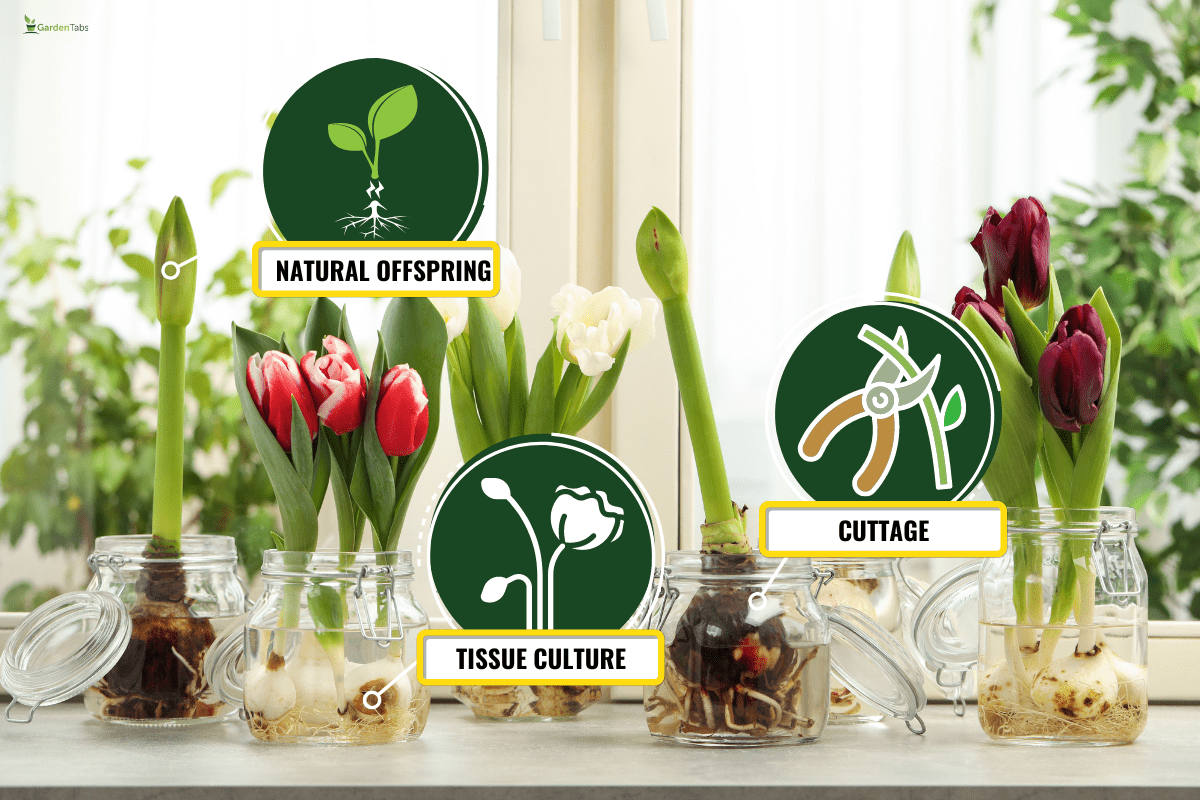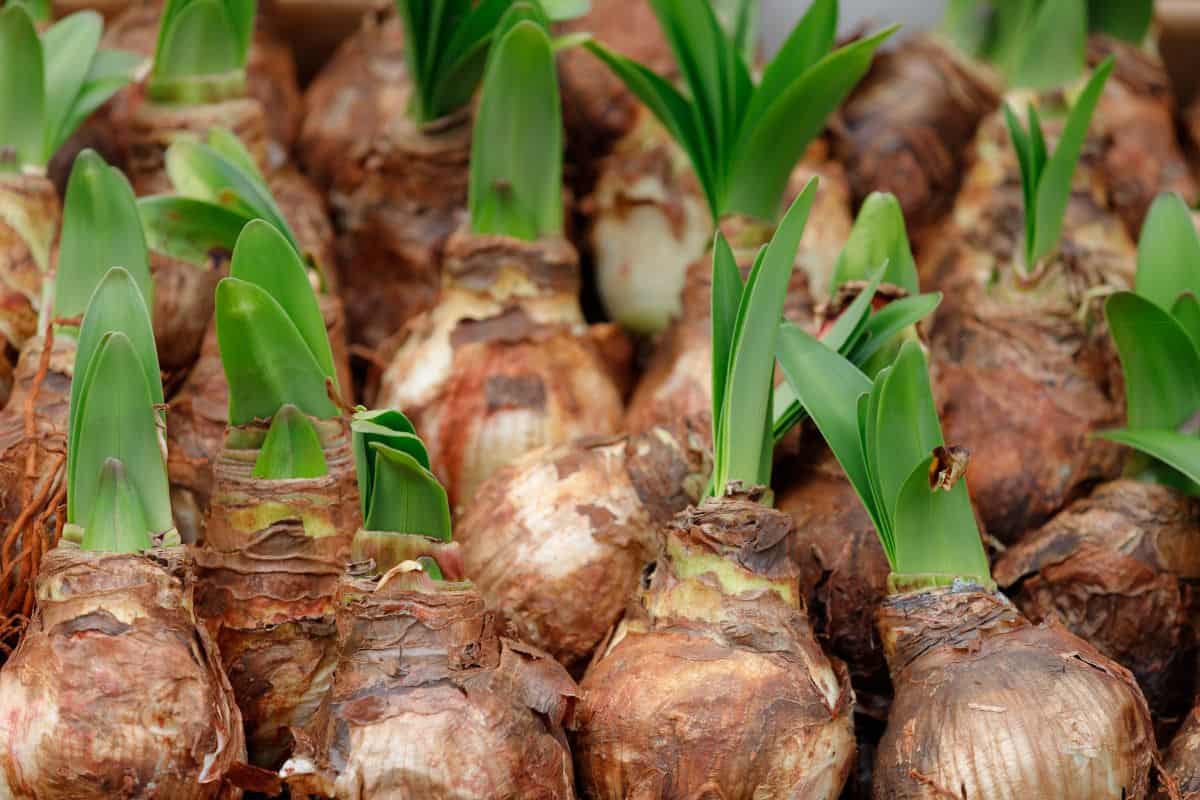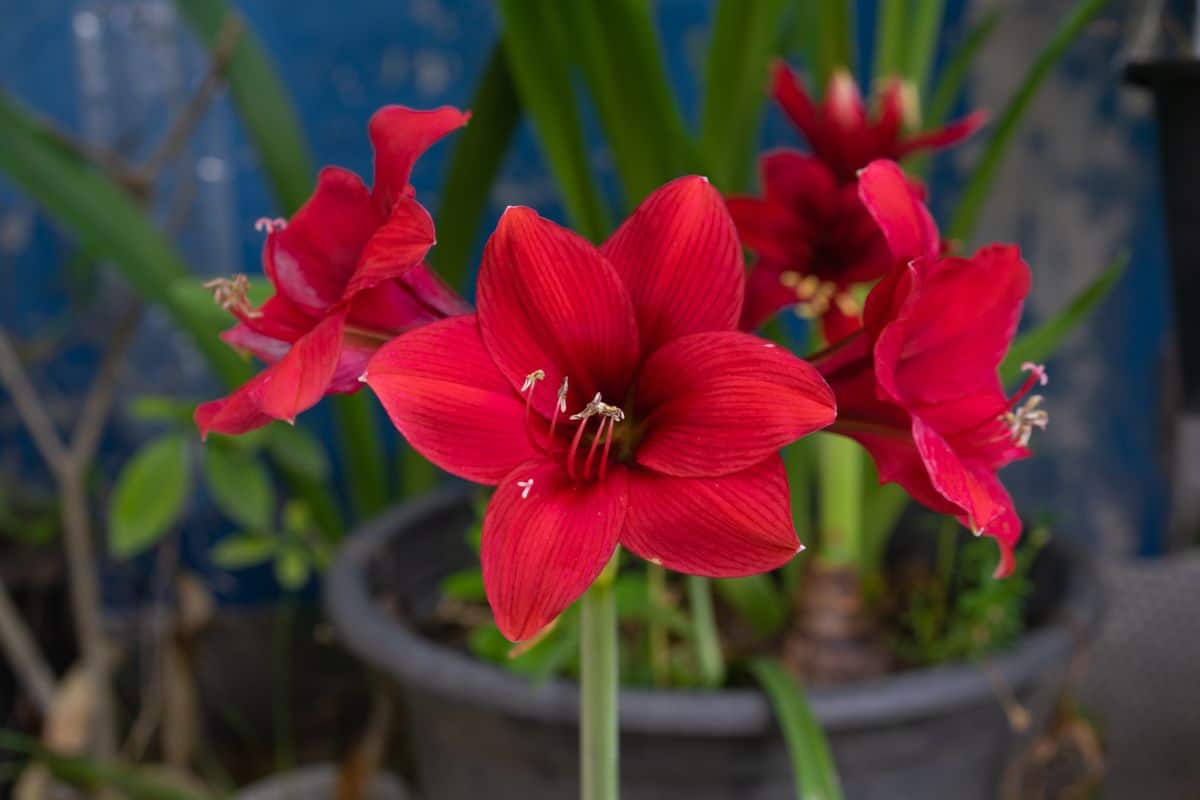If you've found yourself with an amaryllis plant and aren't familiar with the variety, you might wonder if the bulbs multiply. We've researched for you and have the information you need about your amaryllis plant, including how the bulbs multiply.
Amaryllis bulbs will multiply either by themselves or with help through propagation techniques. There are three methods commonly used to multiply amaryllis bulbs:
- Natural offspring
- Cuttage
- Tissue culture
Continue reading to find out more about the multiplication of amaryllis bulbs. We will also highlight the answers to people's common questions about growing, transferring, and caring for the popular flower.

Amaryllis Bulb Propagation
Propagation of plants occurs when a mother source produces new plants. Different propagation techniques aid the process, but it also occurs naturally. Amaryllis bulbs multiply into new bulbs or can be cut into sections that will mature into new bulbs, which are both common forms of propagation.

Natural Offspring
Amaryllis bulbs will self-propagate. Look around the base for an offspring or growth known as a baby on a healthy mother bulb. You can separate the offspring from the mother by gently breaking it away or cutting it off with a tool. The best tool to have is a good pair of pruners.
Consider this professional set from Topbooc to ensure you have the right tool to make the job easier.
The new bulb is ready to be transferred to a new pot to start a new amaryllis plant.
However, the separation should only be done after the flowering process ends. If your plants are in your outside garden, the best time to separate bulbs is in the fall.
If your plants are potted, you have more discretion about when you transplant. If you plan to control the blooming process, consider when you want the bulbs to flower when deciding when to separate and repot your baby bulbs.
Cuttage
Cutting or resectioning amaryllis bulbs is a propagation process that involves making vertical cuts from top to root in a mature bulb to multiply the bulb into new offspring sections.
It is essential to leave stem tissue attached to each bulb section with a fungicide applied for protection from disease. The best time to section out amaryllis bulbs is mid-summer to early fall.
For an effective fungicide, consider this top-rated one from Spectracide.
Tissue Culture
Tissue culture requires knowledge, resources, and experience and probably isn't an option for those new to proportion. That is why it is a method more often used commercially rather than at home. To yield seeds or more plants, tissue is extracted and managed through pollination in a sterile, controlled environment.
Amaryllis plants can also be propagated from purchased seeds instead of bulbs, but this isn't a preferred method for a couple of reasons. First, it can take several years to establish a blooming plant.
Secondly, it's easier to maintain the integrity of the mother plant characteristics when propagated from a bulb rather than a seed.






